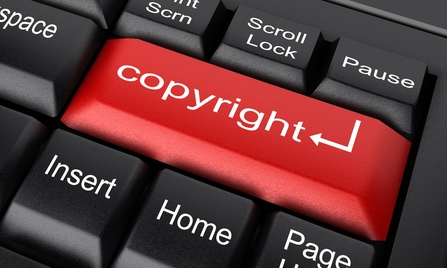Organizing Chapters
Once you have the idea for a book, begin by listing as many topics as you would like covered. You can use a writing tablet or computer; whichever works. Just brainstorm and keep listing without making any decisions as to whether the idea is good or bad. Once you’ve got a list of topics, go through the list and organize all the major topics together. You’ll quickly be able to identify the major areas that stand out and this will provide you with an idea of the chapters that may be forthcoming.
Once the chapters have been determined, then review the items within each section for major subheadings to decide how those chapters may be further divided. You will quickly be able to identify the information that is considerable in size or the information that appears limited. Limited information can be set aside and used in a miscellaneous chapter or it may be left out altogether. This is a decision to make as you outline your book.
Make sure that each chapter has only one topic because you don’t want to confuse the reader. Be clear and concise with the steps that you want your reader to follow. When writing your chapters, be sure to include any life examples and empirical facts to substantiate your information.
Examples and Illustrations
 Most of us learn by examples. If you look at most self help and how to books, they are peppered with examples and illustrations of stories. Including these items into your book lends to the credibility of your book and material. Providing case history and anecdotes throughout will ensure that your reader goes away with some insight and gives him a frame of reference. Remember that these stories should add to your book and should be meaningful and applicable.
Most of us learn by examples. If you look at most self help and how to books, they are peppered with examples and illustrations of stories. Including these items into your book lends to the credibility of your book and material. Providing case history and anecdotes throughout will ensure that your reader goes away with some insight and gives him a frame of reference. Remember that these stories should add to your book and should be meaningful and applicable.
Anecdotes should be included because they will inspire and motivate your readers to follow the methods that you have provided. If you add stories of people who have succeeded by using the methods in your book, it encourages the reader to want to try what you’ve outlined in your book. Make sure that you make the stories personable, include relevant material that pertains to the topic at hand, be descriptive, and keep the anecdotes short and simple. Too long of a story can lose its impact and pacing of the information.
Using illustrations such as graphs, tables, charts, or pictures can be very important to your book. It’s essential that you include them at just the right points and that they add to the information. You should not include these elements just because you like the way they look. Too much of this information can make a book too scientific; thereby, losing some of the readers. It’s a fine line of what should or should not be included so be aware of this.
When including illustrations, it’s important that they be titled and numbered appropriately throughout the book. This will be helpful both for the reader and for the author. For the reader, it will help them identify where these illustrations belong and how they are associated with the written text. For the author, it will help when building the Table of Contents. Note: If only a few of these illustrations are included, then you don’t need to include them in your Table of Contents or develop a separate list to identify them for your reader.
Bullet Points
 Bullet points are critical in self help and how to books. They draw the reader’s attention to exact points within your book about a certain topic or subject. Many times, as writers we tend to write crucial information into a paragraph format. Writing crucial or important information like this can lose impact or can cause the reader to miss the message you are trying to relay. Using bullet points to capture crucial data is a successful technique that is used by many writers when writing self help and how to books.
Bullet points are critical in self help and how to books. They draw the reader’s attention to exact points within your book about a certain topic or subject. Many times, as writers we tend to write crucial information into a paragraph format. Writing crucial or important information like this can lose impact or can cause the reader to miss the message you are trying to relay. Using bullet points to capture crucial data is a successful technique that is used by many writers when writing self help and how to books.
Using Interactive Elements checklist
There are several techniques that allow a reader to interact with information that you have provided. It can be by way of using checklists, taking quizzes, journaling, looking at comparison lists, filling in the blanks, role playing, sound/visual/smell interactive techniques.
- Checklists are probably the easiest to put together. They can be an important and useful tool for the reader as they can use this checklist by copying or tearing out for future use.
- Providing quizzes throughout your book allows the reader to feel like they are learning something. This is also a handy tool for you to emphasize important information for your audience.
- Journaling allows the reader to get insight into internal thoughts and feelings and helps to illustrate certain points the writer is trying to get across.
- Comparison lists are just that. They are useful when comparing data to other data. This can drive home some essential key points when the author is trying is compare a negative versus a positive or to add some contrast between various conditions.
- Filling in the blanks gives the reader a reflective experience.
- Role playing scenarios are a great way to give readers insight into their personalities and how they would handle certain situations.
- With new technology, sound is a great way to incorporate into self help and how to books. A great book for this type of technology would be a book on learning different languages. It would be important for a user to hear the pronunciation of words.
- Including visual techniques would be extremely helpful for some readers. A good example would be if you are creating a how to learn the ABCs for children. You could include a visual interactive such as matching up sounds with objects with popup type methods.
- Including scratcher type scents into your books can also be useful; flowers, soups, perfumes, etc. This is frequently done by magazines selling or marketing perfumes and can be done to teach smells to children, or maybe just used for scent effects for your reader.
As you can see, there are many methods to helping your reader read or use your self help or how to book.
Book Front Matter Items
This includes such things as title page, dedication section, table of contents, illustrations list, foreword section, preface section, acknowledgements section, introduction section, and permissions section (if applicable).
This is the information that can be found at the beginning of the book. It is what begins the book. Front matter items are usually fairly short for self help and how to books. For fiction type books these are longer.
- The title page is just that. It’s a page that includes the main title and any subtitles of your book along with your name.
- The dedication page is where you can dedicate your book to some person that inspired you to complete the book.
- The table of contents is a list of the chapters and any sections that you may want to include.
- An illustrations list is used when many charts, tables, or lists are provided in the book. If there are just a few, then it’s probably best to omit this.
- A foreword is used when a recognized authority has named your book as a reference for a particular field of study or area.
- A preface is used when an author wants to convey why the book was written or how to use the book.
- An acknowledgements page is used to thank people who helped or encouraged you to complete the book.
- An introduction page is used to provide the reader with an understanding of text or to further explain your material.
- A permissions page lists all the permissions obtained from authors or publishers for references used within your book.
Book Back Matter Items
This includes such things are recommended reading lists, appendix, reference section, footnotes section, bibliographies, and indexes. This is the information that can be found at the back of the book and is what ends the book.
- A recommended reading list is just that. It’s a list of books that are recommended for reading.
- Appendixes are used for important information that is crucial to the book but is not included elsewhere. It can be such things as graphs and tables, blank forms, resources, etc.
- A reference section is a place that lists all references to other possible books and authors.
- Footnotes section is a section that captures all the footnotes but avoid using if possible. This can sometimes cause the reader to lose focus on the actual material at hand.
- A bibliography section is used to capture all the resource material used to put your book together. Just list the author’s name, full title of the book and its subtitle (if applicable), and the city the book was published along with the date of publication. Alphabetize and put into a list.
- Indexes are used in many books and can assist a reader in locating a particular word or item. This is sometimes done by authors but there are services available that can put indexes together for a nominal fee.
Permissions
 Obtaining permissions to use a substantial number of quotes or written material from another author is necessary. If you are just using an occasional quote here and there, it most probably is not necessary to obtain permission. Remember that it is your responsibility to obtain permission to use additional material and not your publisher. Sometimes they will assist, but more often than not, they won’t.
Obtaining permissions to use a substantial number of quotes or written material from another author is necessary. If you are just using an occasional quote here and there, it most probably is not necessary to obtain permission. Remember that it is your responsibility to obtain permission to use additional material and not your publisher. Sometimes they will assist, but more often than not, they won’t.
Most people will grant permission to use their material without a fee; however, there are some authors and publishers that will charge a small fee. If you are going through a publisher, ask if they will help with the cost of this fee. If not, then you will either pay it or decide to leave it out. Again, this is a decision that you will make.
If you are seeking permissions from a publisher or company, write to the permissions department. If you are seeking permissions from an author who is self published you can write directly to them. It’s that simple.
Putting together a self help or how to book is fairly easy once you have an idea and a plan on how to organize your material. Finding the time and making the commitment to do it is another thing. Developing a strategy to write your book is crucial to your book being a success.




